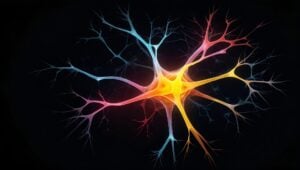A Data-Driven Approach to Insights & Innovation
Even great product ideas can fall to the wayside when design doesn’t put people first, notes McKinsey in its blog, “Here’s why human-centric innovation is necessary.” Indeed, McKinsey points out that human considerations must be placed in the forefront as early as possible in the design process. This is also connected to gaining richer human insights at the right time in the process. In this way, deeper insights can be made and brands can connect better with their consumers. McKinsey notes, “By centering empathy and understanding in design research, companies can both reduce risk in the idea-generating stage and ensure people are at the heart of the process. These needs also include the needs of the planet, society, and what matters to us as human beings.”
Pratibha Kumari, Chief Digital Officer of Data Thick, sees human insights, and human-centricity, as a crucial piece of data science moving forward. In LinkedIn’s “Unleashing the Power of Data: Fueling Digital Innovation & Data Insights,” she discusses the intersection of data and innovation.
Kumari says, “The transition from ‘Big Data’ to ‘Smart Data’ reflects a shift in focus from simply collecting and storing massive amounts of data to extracting meaningful insights, actionable information, and value from that data. The sheer volume of data available can be overwhelming, but innovative minds are turning this challenge into an opportunity. By refining and analyzing data with advanced technologies like AI and machine learning, we’re able to extract actionable insights – turning raw data into smart data.”
This transition from Big Data to Smart Data includes several advantages such as improved data quality, real-time insights, scalability and agility, personalization, and more—including a renewed emphasis on human-centric insights. “Smart Data prioritizes insights that are understandable and actionable for human decision-makers, enhancing collaboration between data analysts and domain experts,” notes Kumari.
Finding the Human Voice
All Things Innovation looked further at this human-centered approach to innovation in, “Finding the Voice of Humanity-Centric Innovation.” With technology growing and constantly evolving in our personal and professional lives, and becoming more pervasive, the innovation community has continued to remain focused on a key counterpoint: the human, user-friendly experience which should always be front and center. This focus on humanized design, which is sometimes known as human-centered design or even termed human-centric innovation, must come to the forefront of a streamlined and thoughtful design process, in which products and services are developed to fulfill human needs and preferences.
Looking forward to TMRE 2024? The conference, which will be held October 8 to 10, will feature the case study, “Widening the Lens: Fueling Innovation Through Human-Centric Insights,” presented by Mina Sfondilis, Director of R&D, Consumer Strategy at PepsiCo, and Rachel Vanlandingham, Sr. Manager, Early Stage Innovation Sensory and Consumer Experience at PepsiCo. Human centricity is a lens through which to view the world and by seeing and truly understanding consumers in their environments, we uncover their beliefs and motivations as individuals, which will lead to better products and successes as a business. Human Jobs to Be Done fuel conceptual ideas significantly more than those not rooted into these insights. Culture shifts, such as human centricity versus consumer centricity, can lead to a deeper passion to the work, especially among R&D colleagues. Register for TMRE 2024 here.
Remember the Human Element
In a rising technological world, human-centric insights are the fuel that can propel innovation in the corporate enterprise. From creating empathy to driving an emotional connection, the human element is what helps understand the consumer, and hence the needs of innovation. We asked Gemini how it can benefit innovation:
Understanding Needs and Pain Points:
- Empathy Fuels Creativity: By incorporating human emotions, motivations, and frustrations, businesses can identify unmet needs and pain points that traditional market research might miss. This sparks creative solutions that resonate with real people and solve genuine problems.
- Designing for Usability: Human-centric insights inform the design and development process. Understanding user behavior, cognitive limitations, and accessibility needs leads to intuitive, user-friendly products and services that are truly valuable.
Building Trust and Brand Loyalty:
- Emotional Connection: Innovation based on human insights goes beyond functionality. It considers the emotional aspects of user experience, building trust and loyalty with the brand. Products that address emotional needs create a deeper connection with consumers.
- Building Customer Advocacy: When innovation directly addresses customer needs, it creates a sense of being heard and valued. This fosters customer advocacy, where satisfied users become vocal supporters of the brand.
Driving Market Adoption:
- Relevance and Value: Understanding human behavior and preferences helps businesses innovate in a way that is relevant and valuable to the target audience. This increases the likelihood of market adoption and ensures the innovation is not just technically impressive but also commercially viable.
- Sustainable Growth: By focusing on human needs, businesses can develop innovations that have lasting appeal. Understanding long-term human behavior and trends allows for innovation that remains relevant and drives sustainable growth.
Harnessing the Power of Data
Human-centric insights are the heart and soul of successful innovation. By prioritizing the human element, businesses can develop solutions that not only impress with technology but also improve lives and create a lasting impact.
That being said, it starts with the transition of data, which can ultimately lead to actionable, human-centric insights. As Kumari asserts, “The transition from Big Data to Smart Data represents a strategic shift towards making data a valuable asset that drives innovation, efficiency, and competitiveness. It’s about harnessing the power of data to make smarter, more informed decisions that have a positive impact on various aspects of an organization and society as a whole.”
Video courtesy of Esomar
Contributor
-

Matthew Kramer is the Digital Editor for All Things Insights & All Things Innovation. He has over 20 years of experience working in publishing and media companies, on a variety of business-to-business publications, websites and trade shows.
View all posts





















































































































































































